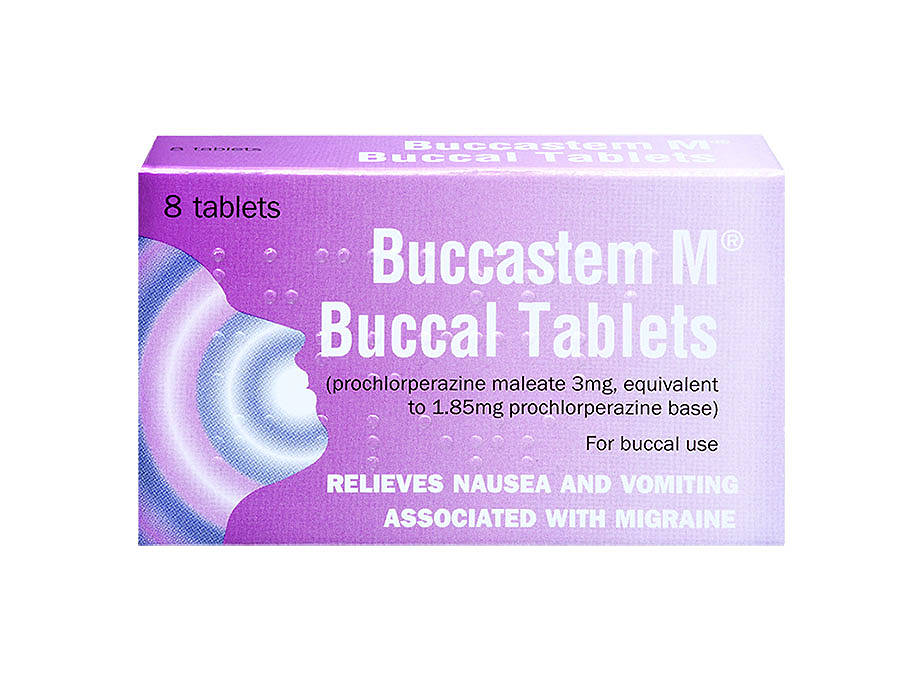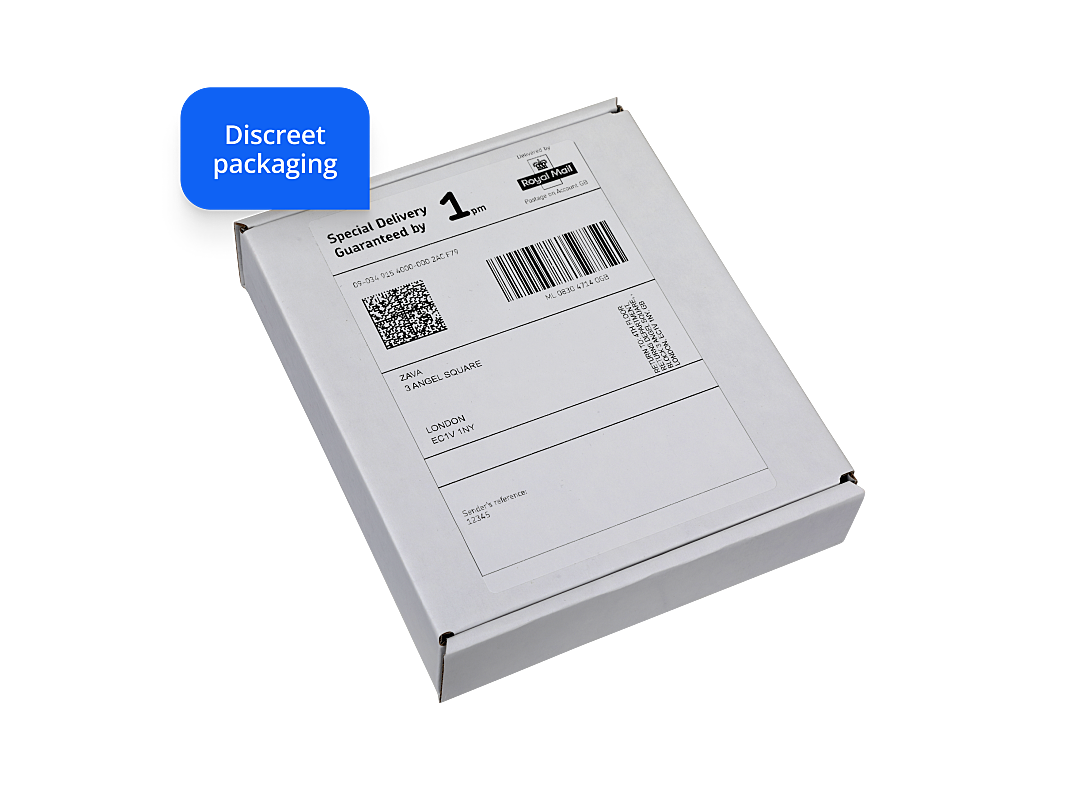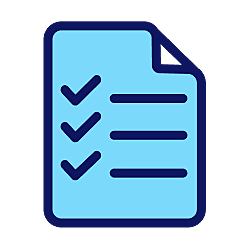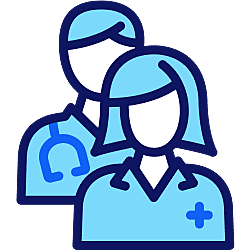



Prices from £19.99
In stock. Simply fill in a brief consultation questionnaire and one of our doctors will review your request today.
-
Buccastem tablets are a prescription treatment for migraine-related nausea. They can be effective when other, over the counter solutions are not.



About Buccastem M
Instructions for taking Buccastem M
- They must not be swallowed whole or chewed
- Place the tablet high up along your top gum, under the upper lip either side of your mouth
- The tablet will begin to soften and stick to the gum within a few minutes
- Allow it to dissolve slowly and completely – this can take between 1 and 2 hours, but most people find that after a few minutes they no longer notice the tablet
Who shouldn't use Buccastem M?
You should not use Buccastem M if you:
- are pregnant
- are breastfeeding
- are under 18 years of age
- only need treatment for simple headaches
Alternatives to Buccastem M
- Sumatriptan 50mg and 100mg Tablets
- Maxalt Melt Tablets
- Imigran Nasal Spray
-
-
What is Buccastem M®? – it is an anti-nausea medicine effective for treating nausea and vomiting associated with migraines. Buccastem M is not used to treat common headaches.
How does Buccastem M work? – it stops the vomiting centre in your brain from getting the nerve messages that are responsible for causing feelings of sickness or triggering your vomiting reflex.
What does it contain? – each tablet contains the active ingredient, prochlorperazine maleate at a dosage of 3mg. Prochlorperazine belongs to a group of drugs called phenothiazines which have a number of effects.
What dosage are there? – the recommended dosage is one or two tablets twice a day for a maximum of two days. They can be taken during the course of your migraine and for other times if you get multiple migraines. Prochlorperazine maleate is available on prescription at a higher dosage of 5mg. The only branded version of prochlorperazine tablets available as buccal tablets is Buccastem M.
-
-
You can reorder Buccastem M through our online service at ZAVA. Our certified doctors provide fast and convenient repeat prescriptions. Our service is for patients who've had their first migraine diagnosed by a doctor and are 18 years or over of age.
- To request your tablets, complete a short online questionnaire.
- A ZAVA doctor will check your answers to make sure treatment is right for you.
- If your medication has been approved by one of our doctors, we will dispense and post this to you with free delivery.
Why request online?
Our service is quick and easy to use. It can also work out cheaper plus we have different delivery options to suit you. Our service involves a healthcare professional regulating the supply of your medicine to ensure it is safe for you. You can also buy Buccastem M from your local pharmacy or on a prescription from your doctor if you prefer.
Are there other alternative treatments?
Migraines can be treated with over the counter painkillers such as paracetamol. If painkillers do not sufficiently reduce your symptoms, you can try treating your migraine with a medication called a triptan. For alternative treatments we offer, see the ‘alternatives to Buccastem’ section.
-
-
You only need Buccastem M if your migraine is causing nausea or vomiting – it isn’t for simple everyday headaches. It is for adults aged 18 years or over who have had their migraine previously diagnosed. You don’t need a diagnosis before each purchase though.
If you need to tell whether you have migraines – they are best defined as a headache which can feel like a throbbing pain on one side of the head. The pain usually worsens when you move your head. Sometimes the pain can spread to your face or neck. There may be other symptoms like:
- feeling sick (nausea)
- being sick (vomiting)
- increased sensitivity to light or sound – this is the reason why people prefer to sit in a quiet dark room during a migraine attack
Many people experience an aura before a migraine starts – symptoms include the following:
- Visual disturbances such as flashing lights, zig-zag patterns or blind spots
- Dizziness
- Numbness or tingling sensation in your hands, face, lips or tongue
However, there are different types of migraine, including:
- migraine with aura
- migraine without aura – a migraine which happens without any warning signs. This is the most common type of migraine
- migraine aura without headache – where you experience an aura or other migraine symptoms but no headache. This is also known as a silent migraine
Other less common symptoms include:
- sweating
- difficulty concentrating
- feeling too hot or too cold
- stomach pain
- diarrhoea
These are usually the signs that help to distinguish between a migraine and another type of headache – a tension headache will usually only involve a dull aching pain in the head with a possible feeling of pressure.
If you think you’re having a migraine for the first time, speak to your doctor. Your doctor will be able to assess your medical history and rule out any other causes for your symptoms so you can get the right treatment.
When can I not use Buccastem M? – do not take Buccastem M tablets if you have any of the following:
- An allergy to prochlorperazine maleate or any other ingredient in Buccastem M
- Liver problems
- Blood problems
- Epilepsy
- Parkinson’s disease
- Glaucoma
- Prostate gland problems
- Rare hereditary problems with fructose intolerance, poor absorption of glucose-galactose or sucrase-isomaltase insufficiency
Instead of using Buccastem M, a more preventative treatment might be right for some people. This would be taken every day, and would try to stop the migraines from happening. This could be right for you if:
- you get migraines more than once a week
- your migraines are so severe that they impact on your life or work, even if you’re using a treatment like Imigran
If this is your experience of migraines, we’d recommend you speak to your GP to see if preventative treatments might be right for you.
Some medicines interact with Buccastem M and should not be taken together – speak to your doctor or pharmacist for further advice if you are taking any of the following:
- Sedatives or tranquilisers such as diazepam or temazepam
- High blood pressure medicines such as atenolol or clonidine
- Anticholinergics such as amitriptyline or imipramine
- Antiepileptics such as carbamazepine or lamotrigine
- Lithium – this is used to treat depression or mania
- Levodopa – this is used to treat Parkinson’s disease
- Desferrioxamine – this is used to treat high levels of iron in your blood
- Anticoagulants such as warfarin
Please see the patient information leaflet provided with your medicine for a full list of contraindications, interactions and side effects.
-
-
Tips on how to use Buccastem M:
- Take it as prescribed
- Do not move the tablet around your mouth with your tongue, as this will cause it to dissolve too quickly
- If you wear dentures, the tablet may be placed in any comfortable position between your lip and gum
- Its best to use the tablet after meals
- The tablet may leave an unpleasant taste in your mouth. You can try sucking a sweet after the tablet has completely dissolved
- If you forget to take a dose do not double up the dose next time. Carry on taking it as advised by your doctor
- It may cause drowsiness. Do not drive or operate heavy machinery until you know how the tablets affect you
- You may become more sensitive to sunlight. Wear sunscreen and avoid exposure to direct sunlight whilst using Buccastem M
- Do not drink alcohol as it may interact with medicines like Buccastem M
Learn what triggers your migraines – the exact cause of migraines is still unknown and there is currently no cure. However, there are some possible triggers that bring on migraines. If you know what they are you can avoid them. These include:
- Hormonal changes – some women experience migraines around the same time as their period and changes in hormones at this time can cause migraines. This usually improves after the menopause.
- Emotional changes – anxiety, stress, depression, tension
- Physical triggers – tiredness, lack of sleep, poor posture, neck or shoulder tension, low blood sugar, skipping meals, travelling
- Certain foods – caffeine containing foods/drinks, chocolate, cheese, citrus fruit, alcohol
- Environmental triggers – smoking, bright lights, television/computer/phone screens, loud noises, humidity
- Medication – contraceptive pill, hormone replacement therapy, sleeping tablets, overuse of painkillers
You should also try to keep a regular daily routine by eating and sleeping on time to help minimise the occurrence of migraines.
Keeping a migraine diary – this may help you to identify potential triggers. You should make a note of:
- the date and time your migraine began
- if you had any warning signs
- your symptoms
- any medication you have taken
- the date and time your migraine finished
If the medication you are taking for migraines isn’t helping you should seek advice from your doctor. They will be able to advise you further or refer you to a specialist if necessary.
-
-
Like all medicines, Buccastem M can cause side effects, although not everybody gets them. Some side effects include:
- abnormal movements, tremors, muscle rigidity and unusual movements of your face and tongue
- local irritation to your gum or mouth
- increased sensitivity to light
- drowsiness
- dizziness
- dry mouth
- agitation
- poor sleep
- skin reactions
- low blood pressure
Rare side effects include:
- Jaundice – yellowing of the skin and/or the whites of the eyes
- Blood problems
Emergency advice – if you experience any of the following serious side effects, you should stop taking the tablets and seek urgent medical attention:
- A high temperature, pale complexion, muscle stiffness and changes in your level of alertness. These may be signs of a more serious condition called neuroleptic malignant syndrome
- Fits
- Signs of infection such as shivering, headache, sweating, high temperature or sore throat
- Blood clots in the veins, especially in the legs (symptoms include swelling, pain and redness in your leg), which may travel to the lungs and cause sharp chest pain and difficulty breathing
- Symptoms of decreased sodium concentration in the blood such as nausea and vomiting, confusion, loss of energy, headache, muscle weakness, muscle spasms and coma
- Very rarely, a severe allergic reaction to Buccastem M can occur. If you experience any signs such as a severe rash, difficulty breathing, swelling of the tongue, eyelids or face, seek immediate medical attention from your nearest A&E department
What to do if you experience side effects – many common side effects will pass and some may be due to the migraine itself, such as a feeling of nausea or vomiting. However, if they do not pass or are very troublesome, consult your doctor, pharmacist or nurse who may advise an alternative treatment.
Are there any long term health risks? – a small increase in the number of deaths has been reported in elderly people with dementia who are taking medicines of the same type as Buccastem M, compared with those that are not. The data is currently insufficient to give an estimate on the actual risk of this occurring.

Dr Kathryn Basford is a qualified GP who works as a GP in London, as well as with ZAVA. She graduated from the University of Manchester and completed her GP training through Whipps Cross Hospital in London.
Meet our doctorsLast reviewed: 19 Jun 2019
-
Alliance Pharmaceuticals (2016). Buccastem® M Buccal Tablets. EMC. [online] Available at: https://www.medicines.org.uk/emc/files/pil.478.pdf [accessed 21st September 2018].
-
Alliance Pharmaceuticals (2016). Summary of Product Characteristics, Buccastem M. EMC. [online] Available at: https://www.medicines.org.uk/emc/product/478/smpc [accessed 12th September 2018].
-
British National Formulary. Prochlorperazine. NICE. [online] Available at: https://bnf.nice.org.uk/medicinal-forms/prochlorperazine.html#PHP74816 [accessed 21st September 2018].
-
Joint Formulary Committee (2016). British National Formulary, 70 ed. London: BMJ Group and Pharmaceutical Press.
-
National Health Service (2016). Migraine. NHS. [online] Available at: https://www.nhs.uk/conditions/migraine/ [accessed 21st September 2018].








